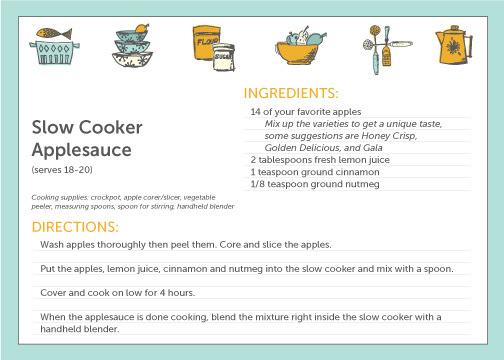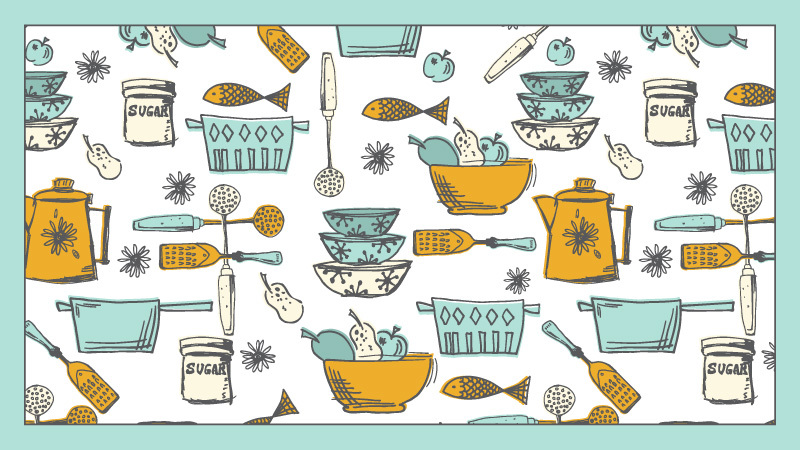Incorporating cooking activities and nutrition projects in your classroom is a way to foster engagement and hands-on learning for virtually any subject. You don’t need to have access to a kitchen to conduct successful projects that integrate history, math, or science, for example. With some inexpensive equipment, your students can whip up healthy, delicious creations while practicing new skills that relate to your curriculum.
Cooking Activities: Cross-Curricular Ties
One of the best things about cooking and nutrition activities is that they have natural ties to curricula. Here are a few ways you can implement cooking activities into your lessons:
History
- Learn about new cultures through culture-specific foods and recipes.
- Create a recipe based on historic crops, like the so-called “Indian corn” that Pilgrims planted in Plymouth.
- Recreate dishes based off historical recipes, such as WWII oatmeal molasses cookies.
Literacy and Reading
- Write a classroom cookbook.
- Interview a family member about a beloved family recipe.
Math
- Learn about liquid and dry measurements.
- Use fractions to make a recipe bigger or smaller.
Science
- Study agriculture by planting a vegetable or herb garden.
- Examine how food changes properties while cooking.
Social Skills
- Practice participation by having each student contribute to writing a new recipe.
- Emphasize teamwork while executing a difficult dish, like a gingerbread house.
Building a Classroom Kitchen on a Small Budget
Cooking in the classroom isn’t dependent on a stove or oven. Inexpensive toaster ovens, induction burners and slow cookers can easily do the trick. Beyond that, gathering mixing bowls, plastic safety knives, measuring cups, lightweight cutting boards, and cooking utensils is a great place to start. Curious Chef is an excellent resource for kid-friendly cooking tools, as are stores like Target and IKEA.
Cooking Activities: Recipes and Resources
A number of online resources offer a wealth of lesson plans, curriculum-based recipes, classroom materials, and ideas for incorporating cooking and nutrition into the classroom across all grade levels. Some of our favorites are: Nourish Interactive, the Whole Kids Foundation, Kids’ Cooking Activities, and the Team Nutrition section of the U.S. Department of Agriculture’s website.
Slow Cooker Chicken Noodle Soup
Adapted from Delish

If you start the soup in the morning, it will be ready for an afternoon snack. This recipe serves between six and eight people.
Not only can students can help measure, chop and shred the chicken, but they can practice their math skills. How will the ingredients change if they’re making the soup for 20 people? What about a potluck for 50 people, assuming 1/3 of them will opt to try the soup? Take the opportunity to practice math skills while making a delicious dish.
Cooking Supplies
- Slow cooker
- Knives
- Cutting boards
- Forks
- Measuring cups
- Measuring spoons
Ingredients
- 1 1/2 lb. boneless skinless chicken breasts
- 10 cups low-sodium chicken broth
- 1 large onion, chopped
- 3 carrots, peeled and sliced
- 2 stalks celery, sliced
- 4 tsp. thyme
- 4 tsp. rosemary
- Salt and pepper to taste
- 8 oz. egg noodles
Directions
- Combine chicken, broth, onion, carrots, celery, thyme and rosemary in a large slow cooker and season with salt and pepper. Cover and cook on low.
- After 6 hours, remove the chicken and shred with two forks. Return the chicken to the slow cooker and add egg noodles.
- Continue to simmer on low, covered, until the noodles are cooked. This will take around 20 to 30 minutes.
Slow Cooker Applesauce
Adapted from Pre-K Pages

Looking for the perfect way to celebrate fall? This recipe is extremely simple, which allows students of all ages to help. Just be sure to use an apple slicer to keep little fingers safe. This recipe serves 18 to 20 people.
Like the previous recipe, you can do some math problems for this applesauce. For instance, if there are four Granny Smith apples, what percentage does that variety comprise? You could even integrate a lesson about the different types of apples and where they grow.
Cooking Supplies
- Slow cooker
- Peelers
- Apple slicers
- Knives
- Measuring spoons
- Stirring spoons
- Handheld blender
Ingredients
- 14 assorted apples
- 2 tbsp. fresh lemon juice
- 1 tsp. ground cinnamon
- 1/8 tsp. ground nutmeg
Directions
- Wash the apples thoroughly then peel them. Using the apple slicer, core and wedge the apples. Then, slice the wedges of apples into smaller chunks.
- In a large slow cooker, combine the apples, lemon juice, nutmeg and cinnamon and mix with a spoon.
- Cover the slow cooker and cook the mixture on low for four hours.
- When the apples are soft, use the handheld blender and mix the cooked apples inside the slow cooker while still warm. Let the applesauce cool before serving.
Cooking Activities that Promote Healthy Choices
Aside from the fact that cooking with your students engages them in learning, there are numerous health and wellness benefits to incorporating nutrition and cooking activities into your curriculum. Today, 18.5 percent of U.S. children and adolescents are obese, according to the Centers for Disease Control and Prevention. The rise in easy availability of fast food and less-healthy packaged meals has resulted in mass consumption of meals that are too high in salt, sugar and fat. Because of a dependence on fast food, many children don’t know the basics of healthy food preparation.
Kids are often surprised by how delicious healthy food can taste because of their lack of access. Teachers can play a major role in the prevention of childhood obesity by educating children on healthy habits, promoting healthier eating and incorporating simple cooking activities into their classroom.







